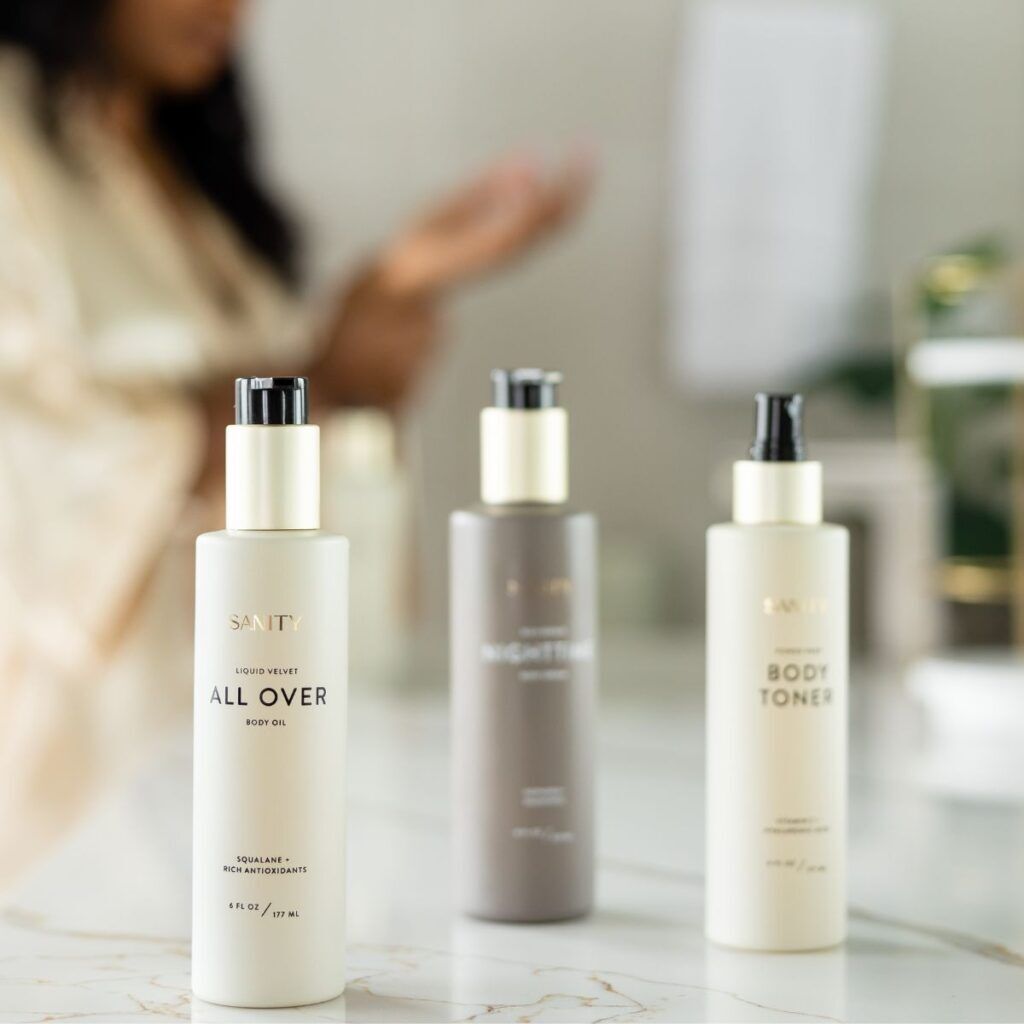Have you ever bought a product in part (or entirely) because the packaging looked cool? Or eco-friendly, or beautiful, or funny? From shelf appeal to brand loyalty, packaging design can make or break your product. In this blog, we’ll share the importance of intentional packaging, our guide to packaging design, and a peek at some recent M Agency design work for Sanity Skin’s body care line.
Why Does Packaging Matter?
Impacts Sales: According to a study by Ipsos, 72% of Americans surveyed said a product’s packaging design often influences their decision to purchase and 67% said the product’s packaging materials also often influence those decisions!
Whether we realize it or not, package design creates a psychological and emotional response that impacts decisions. Unfortunately, simply having the best product on the market is typically not enough, and positively differentiating your brand through product packaging may often be the difference between making and losing a sale.
Connects With Your Audience: Well-designed packaging will quickly stand out to your audience and connect with their values and needs.
Builds Trust: Custom packaging is often your company’s first opportunity to share its story with a potential customer. High-quality design and thoughtful copy can be an initial touchpoint to build trust with your audience on their journey with your brand.
A Modern Consideration: Packaging design is no longer just a tactile experience for the customer. In fact, your customer’s encounter with your product’s package design may now start before they even see the product in person! With modern trends like unboxing videos and user-generated content, many consumers may watch someone else open a package from your company online before interacting with it in real life.
Types of Packaging
As you’re deciding what packaging needs your business has, it’s important to know the different components involved:
Outer Packaging: This includes the box or bag a product comes in and anything else inside, such as wrapping, business cards, stickers, or thank you notes.
What’s trending? Branded tape to seal shipping boxes, reusable or compostable mailing bags, custom tissue paper, and handwritten notes!
Product Packaging: This is the packaging of the product itself, the label design on a yogurt container, the box design on cereal, or the tag hanging on a dress.
What’s trending? Sustainable materials and visual storytelling!
Your Guide to the Packaging Design Process
PLUS, A PEEK AT M’S PACKAGING DESIGN WORK: A CASE STUDY WITH SANITY SKIN
Phase 1: Audit
If you currently have branded packaging that you’re considering changing or updating, a great first step is to do a quick audit to figure out what is and isn’t working with the packaging you have. In this process, consider some of the following questions:
Can you tell what the product is right away?
Consumers should be able to see quickly and clearly what the product is and why they need it.
How does it stand out (positively and negatively) on shelves?
Does it look dated next to other designs on the shelves? Does it stand out in a way that misconstrues what it is? Does it have a unique color or bold design that makes it pop in the sea of options?
Does your target audience connect with it?
You want to ensure that your packaging catches your target audience’s eye positively, both in aesthetics and form. Part of this is knowing what your potential customers don’t want to see in packaging.
For example, let’s say one of your ideal customer’s core values is sustainability and environmental activism.
If your product’s packaging is made with excessive and unrecyclable plastics, seeing it may result in an adverse reaction and negative emotional response to your brand.
You may end up communicating that you don’t share this value in common and your offerings are not eco-friendly, all before they even find out what the product is!
How does it fit within your brand story?
Ensure your product packaging design tells the same story as the rest of your brand. It should be collaborative and cohesive with your brand strategy and the story your brand tells through social media, websites, and other marketing materials.
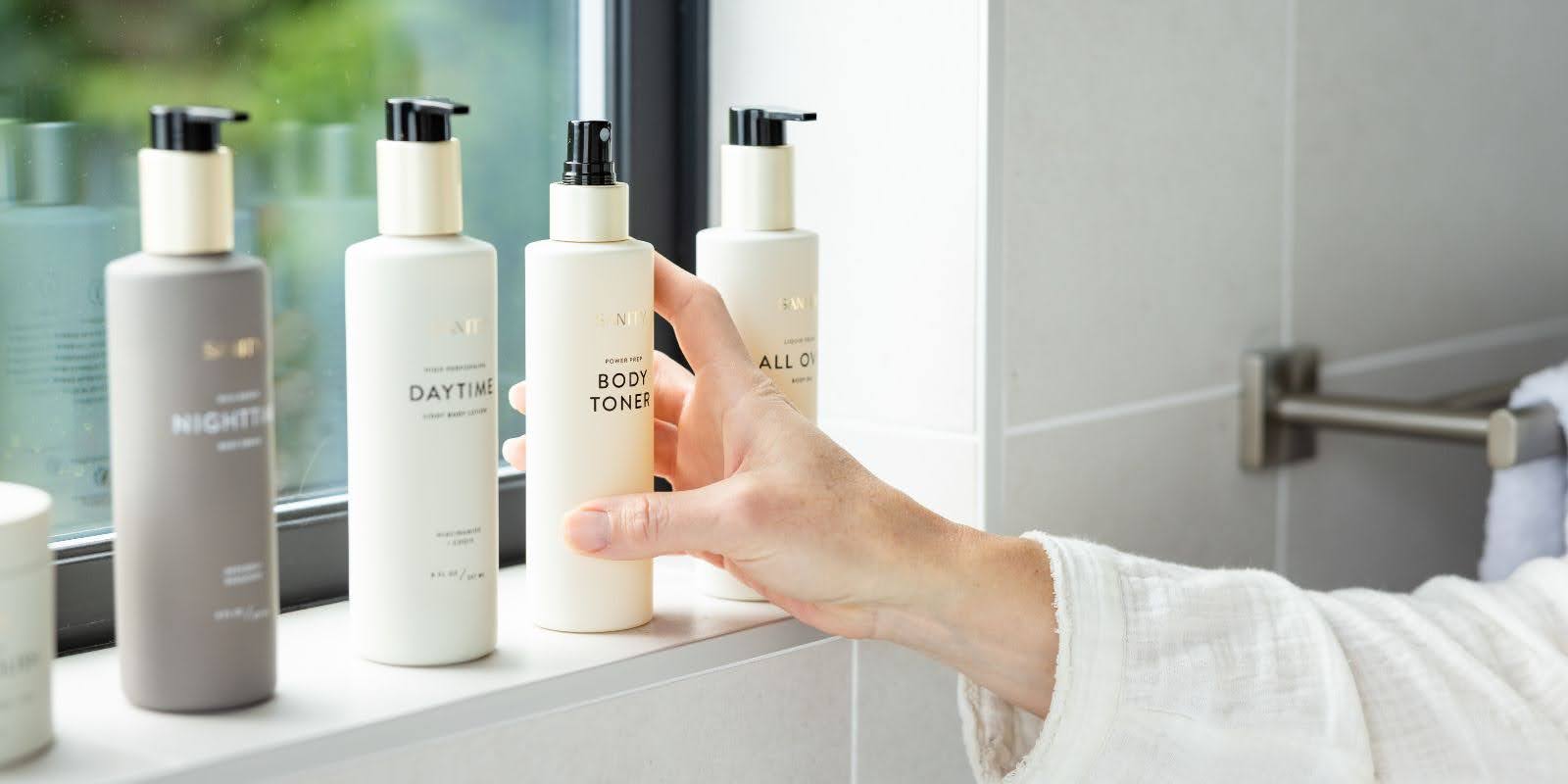
Phase 2: Materials and Specifications
The second phase in the packaging design process is to consider and gather the materials and specifications you’ll need to design for.
Packaging Materials
Check to see if the materials you’re interested in using are available. Whenever possible, grab a sample to see and feel them in person.
Manufacturer Specifications
Whether you’re using Adobe Illustrator, Photoshop, Canva, or another tool to design your packaging, it’s crucial to make sure your file aligns with the manufacturer’s specifications. Check with the manufacturer to get the exact specs you’ll need to be designing for. You don’t want to get too far down the road on a design only to find out the template you’re using doesn’t work!
Case Study: To support Sanity Skin as they navigated the fluid timelines of production, our team closely collaborated with their suppliers, ensuring everything went smoothly and was perfectly designed to specs.
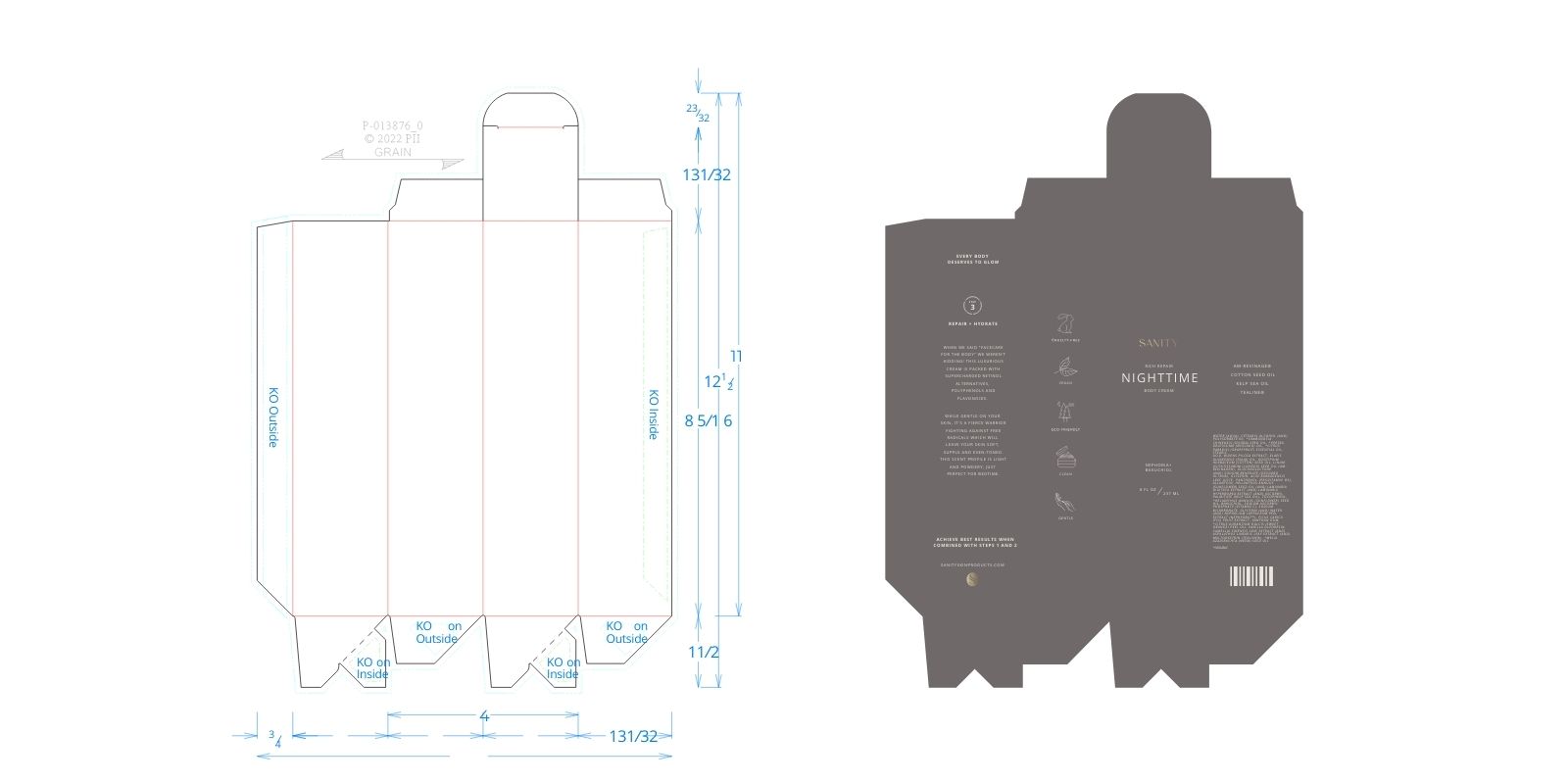
Phase 3: Design
The third step in the packaging process is design. Here are some key considerations to keep in mind when designing packaging for a brand:
Match Your Branding
Your team worked hard to create brand guidelines for good reason—use them!! Brand guidelines ensure consistency in your brand story, from social media content to product packaging.
Use your brand’s typography, logo, icons, and colors as the starting point for the graphic design work, and maintain a consistent voice in the copy. This helps foster brand recognition between products and builds trust with your audience.
It’s important to note that this doesn’t mean every product should look exactly the same. You’ll want to clearly differentiate flavors, scents, etc., to avoid confusion and product misuse! You can still create distinct looks for different products while aesthetically aligning with your brand imagery.
Case Study: To clearly differentiate Sanity Skin’s Nighttime Body Cream from its Daytime Body Lotion, we used two of its brand colors. We made the Nighttime Body Cream bottle the brand’s darker grey color and the Daytime Body Lotion its lighter cream color.

Concisely Convey Your Message
Packaging is a significant opportunity to build trust and share your message with your audience. However, it typically only has a little space for in-depth copy, and even if you do have more room, you don’t want to make your customers do a word search to find the information they’re looking for.
Instead, speak to your product’s key factors—what it is, how to use it, and why it’s different—as simply as possible so that a customer can get the main points even while scanning the shelves.
Case Study: Our design team created two sets of icons for Sanity Skin to communicate a lot of information with customers quickly. The first set shows which step in the skincare routine the product fits into – Step 1, Step 2, or Step 3.
The second set of icons shares what differentiates the products from other brands: clean, all natural, cruelty-free, gluten-free, gentle, eco-friendly, and vegan. By creating these modern, simple designs that matched the company’s branding, we could put a lot of information on the packaging in a minimalist, eye-catching way.

Make it Easy to Digest
Too many fonts, design elements, and words can distract and overwhelm the eye. Make sure your design is balanced and organized.
Consider Design Trends
This is all about finding the sweet spot for your brand. While you don’t want your packaging to be so heavily influenced by micro trends that it quickly looks dated, you also want to stand out among all the products customers have to choose from, both in-store and online.
Consider the Customer Journey
Take note of where your customers will be in their journey with your brand when they receive the product, and think about the next steps you’d like them to take. If you’re interested in building engagement on social media, include your Facebook, Instagram, TikTok, or X (Twitter) handles and a branded hashtag.
If you want to increase reviews, you should put details about where they can share their feedback online. If you’d like them to make another purchase, add a card with a discount code.
Use Mockups
Before you send a design to print, make sure to put together mockups to understand what different design ideas will look like live. You can also create a mockup of a store shelf to see what your packaging will look like alongside other brands.
The mockup stage is a great time to get feedback from the rest of your team, especially those who aren’t a part of the process, to see what their initial thoughts and perceptions of the product and brand are based on the design.
Case Study: Our team created multiple mockups to help the Sanity Skin team visualize different design concepts.
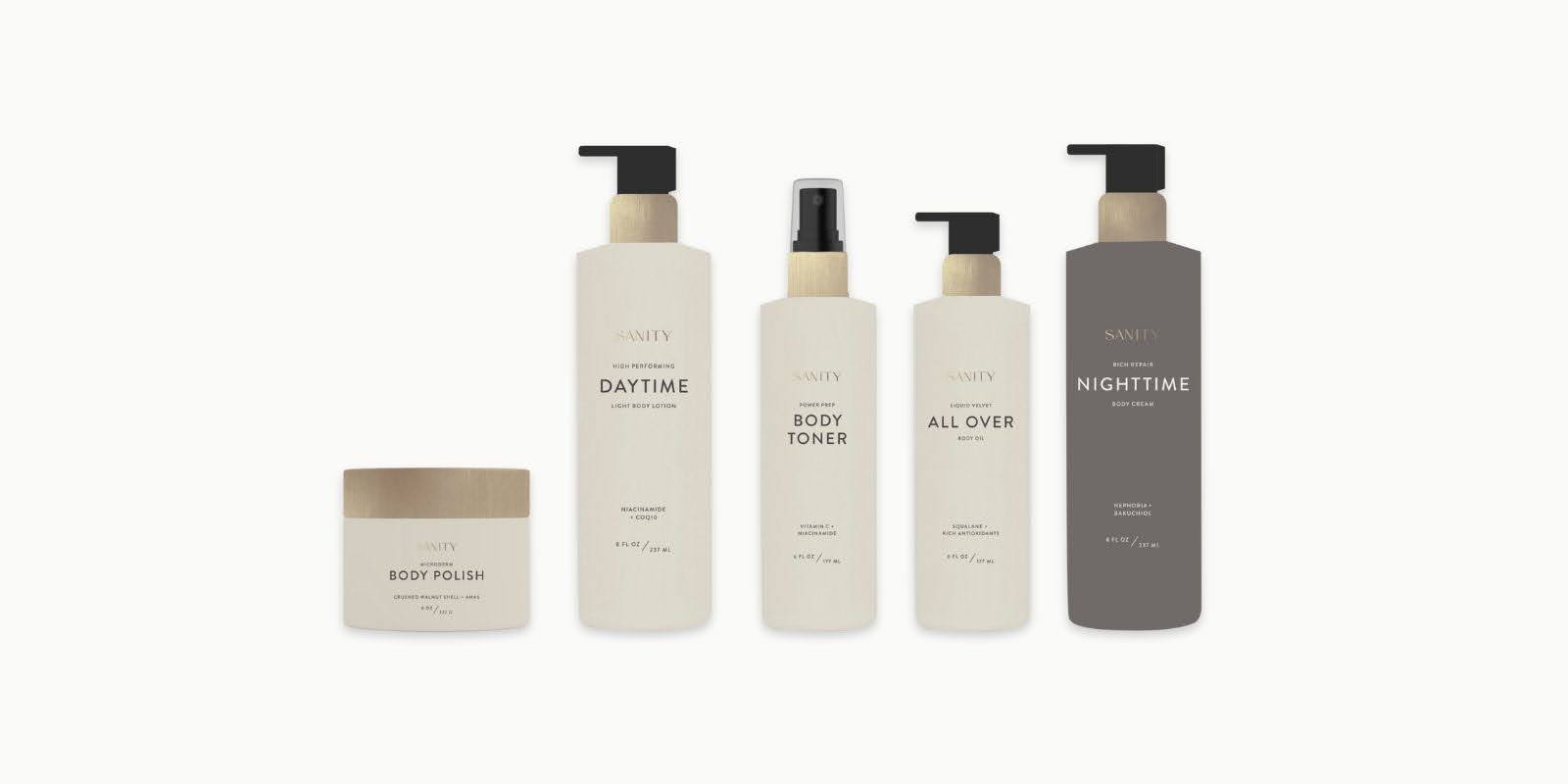
The Finished Product: Modern, Minimalist Packaging for Sanity Skin’s Body Skincare Collection
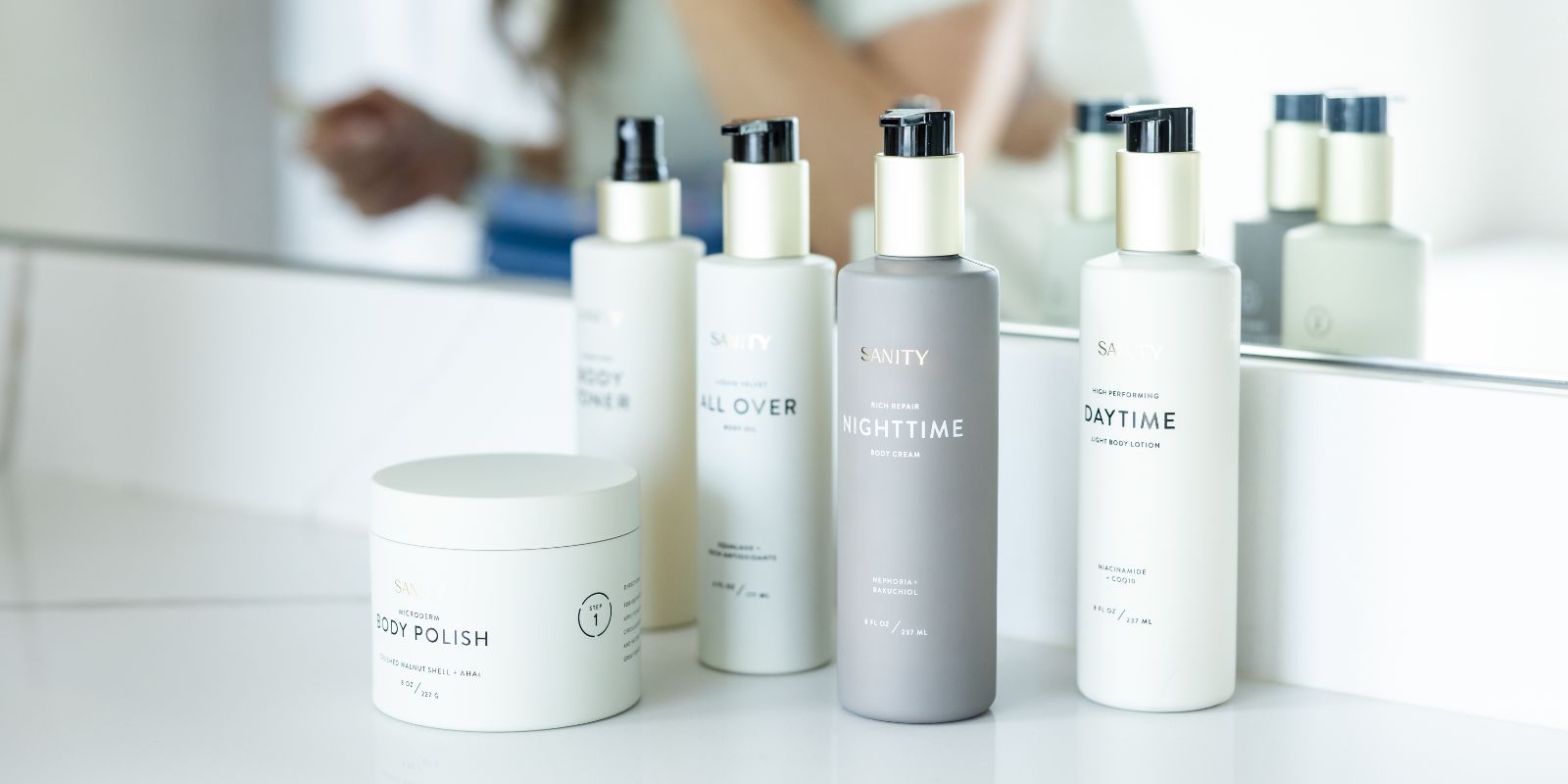
After doing a complete rebrand for Sanity Skin, including brand identity and imagery, our design team at M Agency got to work creating box and product packaging for their full line of luxury skincare products. We took a minimalist approach to showcase the high-performing products and clean ingredients.
To clearly and quickly share key details about the products and how they work, we created two sets of icons that seamlessly blended with the rest of the brand’s imagery. We also utilized the brand’s color palette to differentiate between similar-looking products: the Nighttime Body Cream and the Daytime Body Lotion.
The finished product was precisely what the client wanted: packaging designs so beautiful, you’ll want to leave the products on the bathroom counter.
